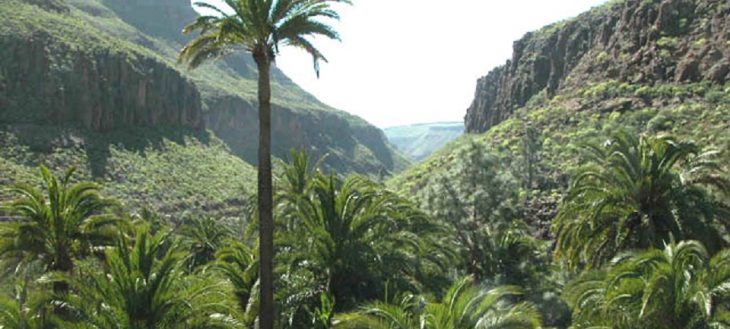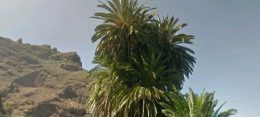Is scientific name is phoenix canariensis.
Its beauty, adaptability and resistance to cold makes it one of the most used trees in
gardening. On the Canaries the species is protected. According to law, it is the natural
symbol of the Canary Islands, together with the canary.
It is a tall palm tree with a thick, very leathery trunk. The leaves are densely populated with
leaflets and can be 2 to 3 metres long. Its flowers grow in tight, orange coloured
inflorescences.
It grows in the lower areas of the Canary Islands, typically between 10 and 500 metres above sea level and forms part of the so-called thermophile forest. With its roots it reaches
subterraneous water, it survives short periods of flooding, tenaciously holds the substrateand can anchor itself to the unstable soil of ravines. It is a very long lived species, so much so that the tallest specimens can be older than two or perhaps three centuries.
Many uses exist for the various parts of the palm tree on the Canary Islands which have
mostly fallen into disuse. On the Island of La Gomera, the sap, which is called “guarapo” is
extracted to produce so-called palm tree honey. It produces edible fruit, called “támaras”
which look a bit like dates.
- Artículos relacionados



